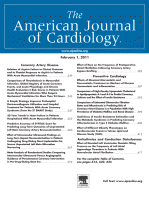Effect of different obesity phenotypes on cardiovascular events in Tehran Lipid and Glucose Study (TLGS)
Authors
Affiliations
Abstract
In this community-based study, 6,215 subjects aged ≥30 years (43% men, mean age 47 years) free of cardiovascular disease (CVD) at baseline were followed for a mean of 8.1 years to assess risk for CVD stratified by body mass index and dysmetabolic status. Participants were stratified by body mass index categories (18.5 to 24.9 kg/m² = normal, 25 to 29.9 kg/m² = overweight, and ≥30 kg/m² = obese) and dysmetabolic status. Dysmetabolic status was defined as having metabolic syndrome according to the International Diabetes Federation’s definition or diabetes. First CVD events occurred in 446 subjects. Multivariate-adjusted hazard ratios for CVD events in normal-weight, overweight, and obese subjects without dysmetabolic status were 1.00 (reference), 1.10 (95% confidence interval [CI] 0.76 to 1.61), and 1.07 (95% CI 0.59 to 1.96), respectively, and for normal-weight, overweight and obese subjects with dysmetabolic status were 2.10 (95% CI 1.36 to 3.26), 2.35 (95% CI 1.71 to 3.22), and 2.35 (95% CI 1.71 to 3.22), respectively. There was an interaction between body mass index and metabolic abnormalities in predicting CVD. In conclusion, normal-weight subjects with dysmetabolic status had higher risk for future CVD compared to healthy obese subjects.

